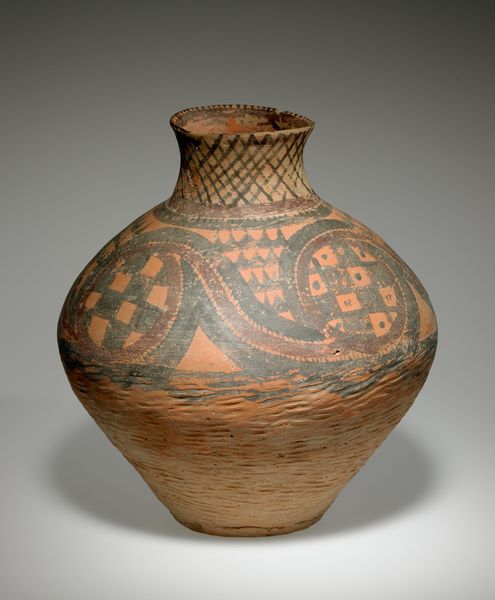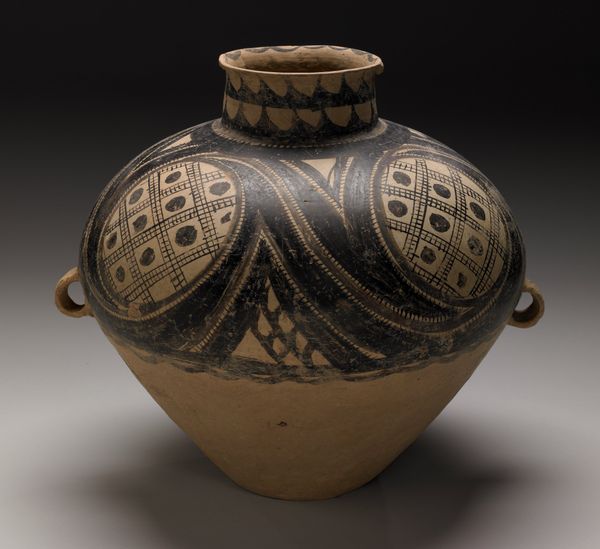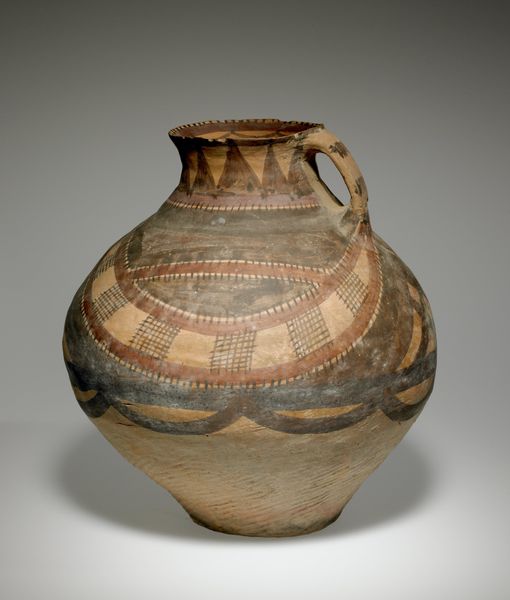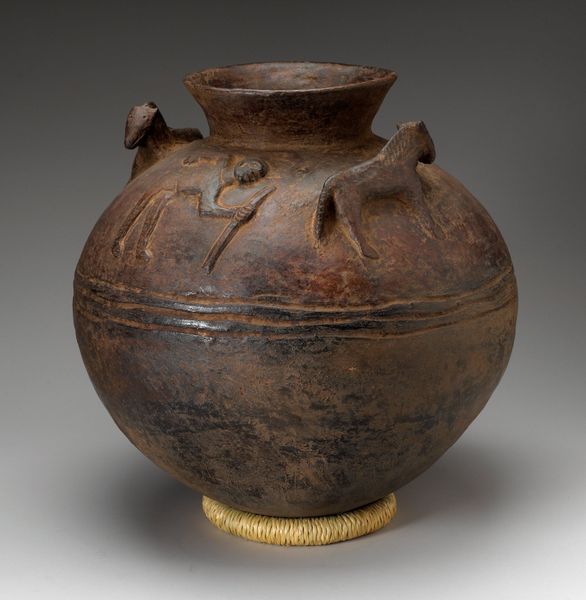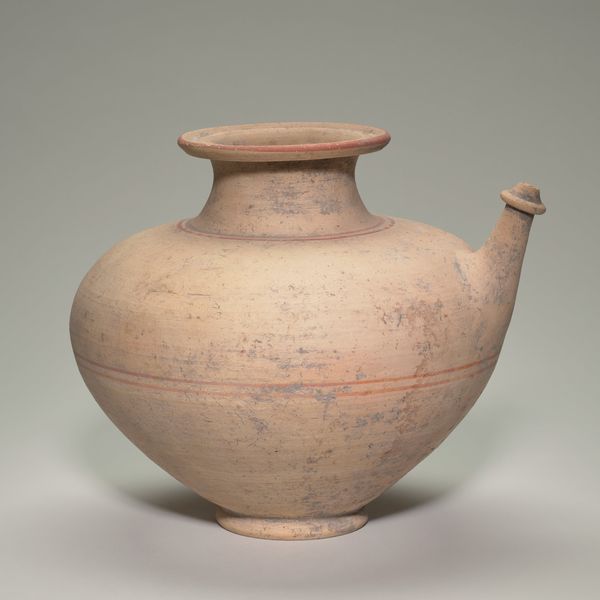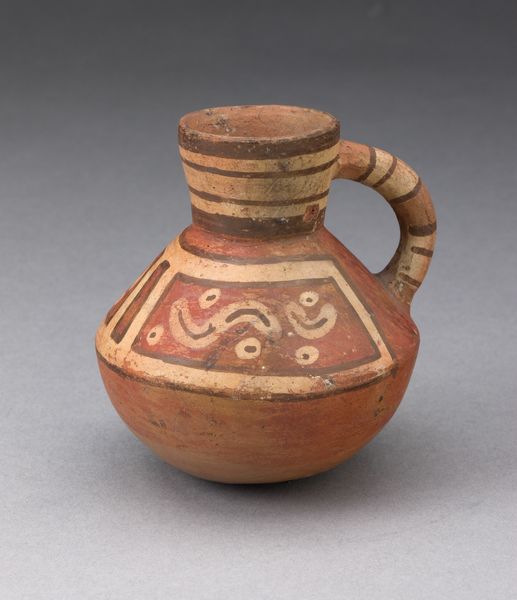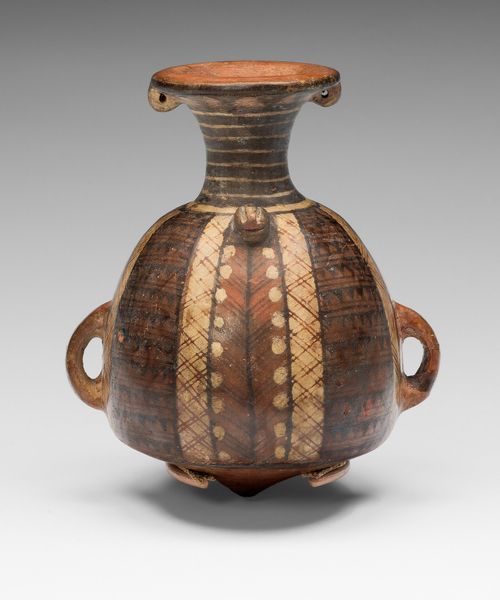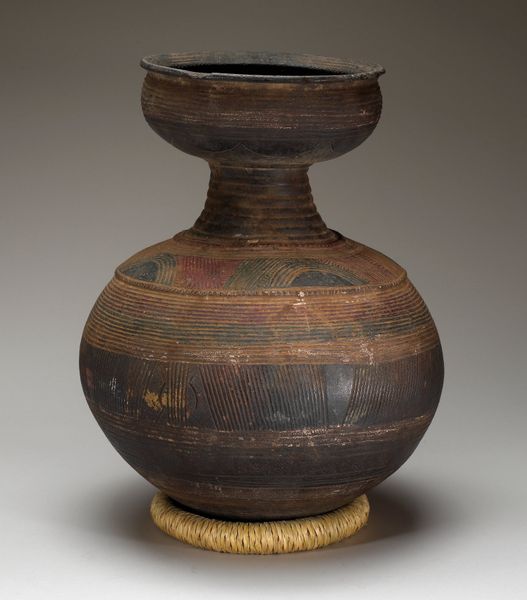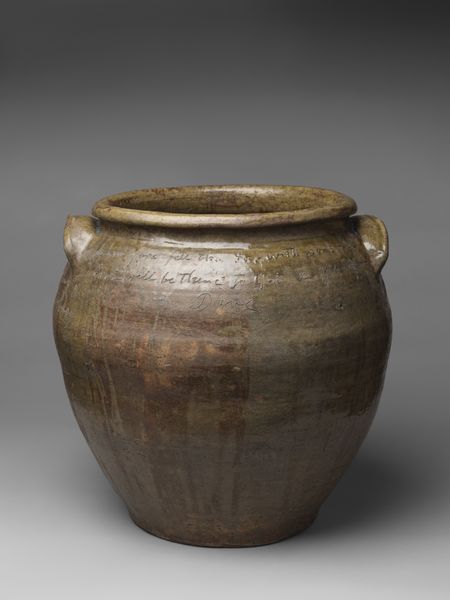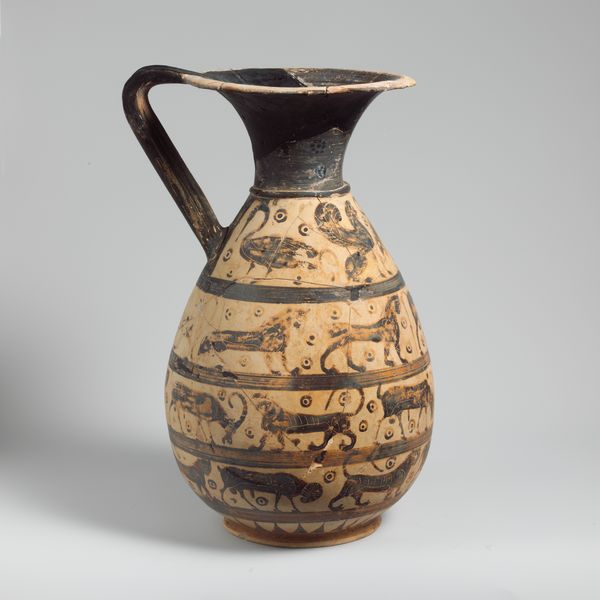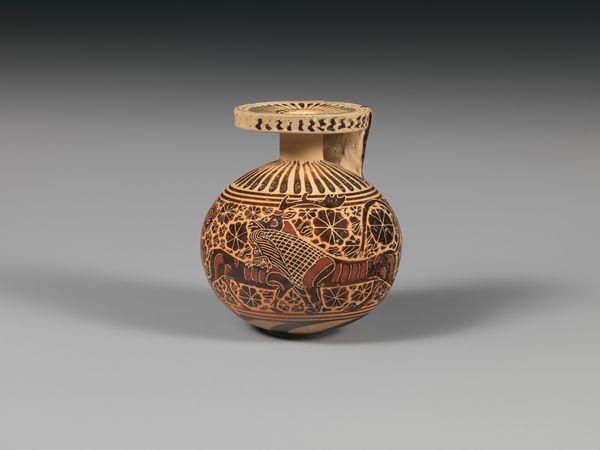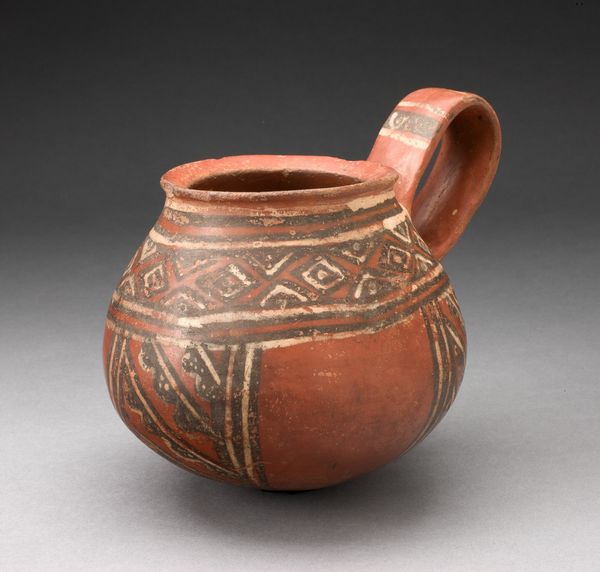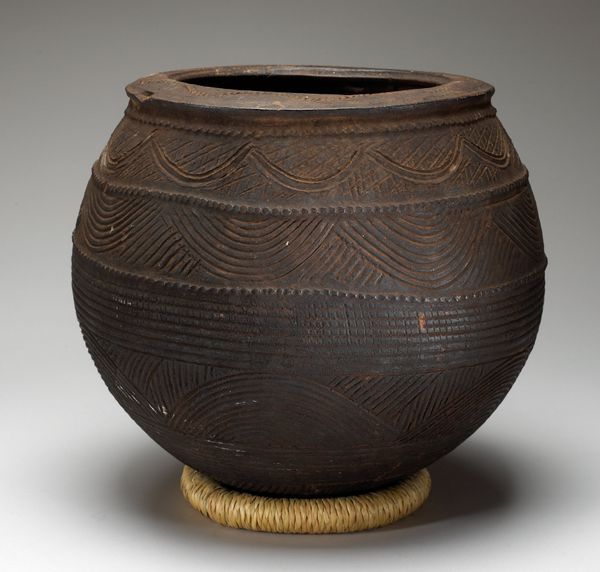
ceramic, earthenware
#
ceramic
#
earthenware
#
food illustration
#
geometric
#
ceramic
#
abstraction
#
line
#
prehistoric
Dimensions: 20 1/2 x 16 3/4 x 15 1/4 in. (52.07 x 42.55 x 38.74 cm)
Copyright: Public Domain
This storage jar, now at the Minneapolis Institute of Art, was created by the Majiayao culture, an ancient group of people in China. Their pottery shows us how they lived and what they valued. The jar’s painted designs, mostly in black, reveal a deep connection to water. Waves encircle the lower half, while abstract patterns near the top might evoke the movement of fish. These images weren’t just decoration; they were tied to the community's survival and identity. The Majiayao people depended on the Yellow River for agriculture and daily life, so water motifs were potent symbols of prosperity and continuity. Consider how this jar, likely crafted by skilled women artisans, embodies a sophisticated understanding of the natural world. It serves as a reminder of the ingenuity and cultural richness of early societies, who found beauty and meaning in the elements that sustained them.
Comments
minneapolisinstituteofart almost 2 years ago
⋮
Located in the far northwest of China, the Majiayao culture (c. 3800-2000 BCE) produced an accomplished painted pottery tradition. Although originally derived from the Yangshao culture, Majiayao is now considered a culture of its own. Many of its tomb sites in Qinghai and Gansu provinces were richly furnished with decorative pottery. The culture went through an evolution of painted pottery designs that lasted more than a thousand years. During the Majiayao phase (3100-2700 BCE), when this spectacular storage jar was created, painted decoration had become independent. Designs have a distinctive linear quality with black parallel lines encircling the vessel with fluid and rhythmic movements creating striking graphic effects. The additional use of a white pigment, here effectively used to highlight the design, is somewhat rare. The vessel comes from Gansu or Qinghai province in the upper Huang He (Yellow River) basin; probably the most prolific pottery producing area between 4000 and 2000 BCE. The Majiayao region would later produce two other distinct types of painted pottery; Banshan (2600-2300 BCE) and Machang (1200-2000 BCE), classic examples of which are displayed below and to the left.
Join the conversation
Join millions of artists and users on Artera today and experience the ultimate creative platform.
